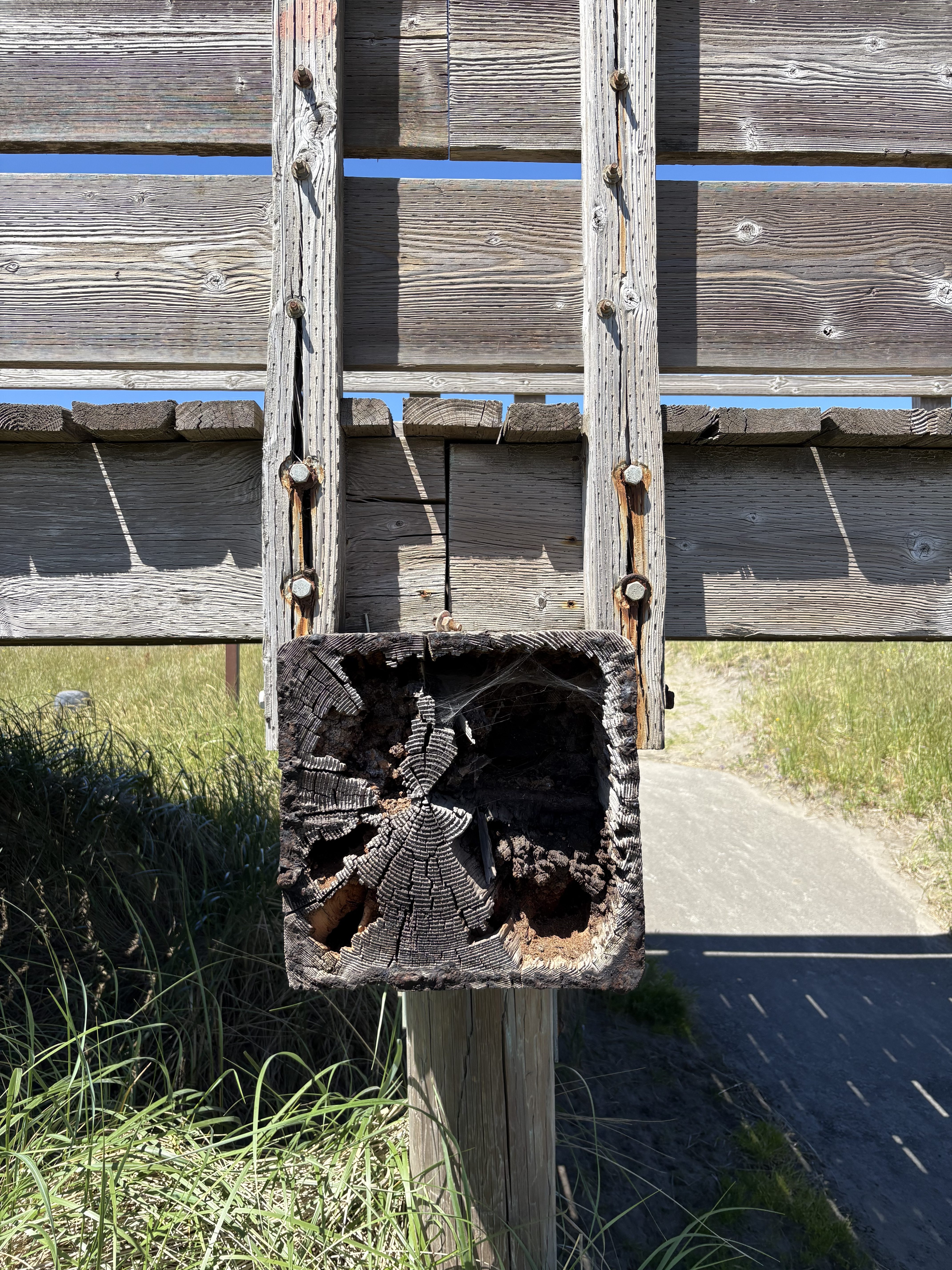Guest Column: One hundred years and counting for the Oysterville Schoolhouse
Published 5:00 pm Tuesday, September 11, 2007

- of Sydney StevensOysterville School 1910: Teacher F. W. Winslow, is in right foreground. Tall gentleman in center is Meinert Wachsmuth. In foreground is his dog, Rover. Note that there is not yet a belfry on the School House.
One hundred years ago this month, a new Oysterville School opened its doors. However, the once familiar sound of the school bell was not heard on that first day, nor did it ring for several years to come. The school had been completed according to all specifications but a belfry was not included. Not until five school years had passed would there be bell or belfry for the little one-room school house.
Trending
Presumably, lack of a bell did not keep students from a timely arrival on that auspicious fall day of 1907. For the two long years since the old two-story school had burned down, they and their teacher had “made do” in makeshift quarters. Sometimes they met at the Methodist Church at the north end of town; sometimes in the abandoned county courthouse building across from the school playyard. No doubt excitement ran high at the thought of beginning classes in a brand new building.
This was Oysterville’s third school building. The first was a prefabricated building made of redwood sawed in California and shipped to Oysterville aboard one of the oyster schooners in 1863. When it arrived, the citizens declared a holiday and, with the aid of several carpenters, put it together.
It consisted of one room, 18-by-30-feet. The teacher’s desk and a recitation table were placed in the center. Two wide boards nailed to opposite walls extended the length of the room and served as student desks. Pupils sat with their backs to the teacher, boys facing one wall and girls the other. Attendance during the first few terms was by subscription, but the school soon became the first in Pacific County to be supported by taxation.
Trending
The booming community on the bay soon outgrew the “little red schoolhouse” as the redwood building was called, and in 1874 John Peter Paul, a master craftsman, was commissioned to draft plans and construct a new building. The second building, approximately 40-by-40-feet, consisted of two rooms and was two stories high. It was constructed on a block of land donated by Gilbert Stevens “for school purposes” – the same location as the present-day schoolhouse. It burned down in 1905.
Full HouseTwenty eight students were in attendance during the opening year of the new school. They represented thirteen families living in District No. 1 which extended south from Oysterville to Joe Johns Road and north to Leadbetter Point. Ages ranged from five-year-old Edward (“Ned”) Needham to sixteen-year old Loretta Wirt. As to the teacher, the record is unclear.
According to an article by Velma Laakko in the Winter 1978 issue of Pacific County’s historical quarterly, the Sou’wester, the first instructor in the building was William Riddell. However, according to two students who attended that year – Ned Needham, whose school memories appear in the same Sou’wester issue, and my own aunt, Medora Espy – the teacher from 1907 to 1909 was Miss Eva G. Butler. Until more evidence surfaces, the mystery remains.
The teacher, whether Mr. Riddell or Miss Butler, was responsible for students in grades one through eight and, by the terms of their contract was, “to teach, govern and conduct the public school of said District to the best of his/her ability, follow the course of study lawfully adopted, keep a register of daily attendance of each pupil attending said school, make all reports required by law or by lawful authority, and endeavor to preserve in good condition the school house, grounds, furniture, apparatus, and such other property of the district as may come under the immediate supervision of said teacher…”
There is no documentation concerning the teacher’s salary for the 1907-1908 school year, but by 1914, the salary was $80 per month, plus another $5 if the teacher was willing to perform janitorial work. This included sweeping the school room, washing the blackboards, refilling the water bucket and throwing a cup of lime down each of the outhouse holes.
The 22 x 30 foot school room was furnished with the usual teacher’s desk, recitation table, and student desks which were arranged in rows, the seat of one desk attached to the desk behind. Smaller desks stood toward the front of the room. The American flag was displayed in one corner; a map of the United States, a portrait of George Washington, and several large blackboards hung on the walls. Illumination was provided by the six large windows, three on either side of the room. A coal oil (kerosene) lamp on the teacher’s desk could be lit on the darkest days of winter.
The AmenitiesHeat was provided by a wood-burning stove and the wood box was filled daily by the older boys from the alder, spruce, fir, hemlock or crabapple cordwood in the woodshed. Each summer the Board of Directors called for bids for the year’s wood supply. Typical was a bid in 1919 by Sam Andrews for “18 ricks of 16-inch hemlock to be ricked in the woodshed at $2.50 per rick.” (A rick is 4 feet x 8 feet x 16 inches or one-third of a cord.)
At either side of the front porch was a cloak room – one for girls and one for boys – where lunch boxes were placed and coats were hung. To the rear of the building was a woodshed and between the shed and the school building, along the walkway, was a pitcher pump where hands could be washed or a drink obtained. The outhouses – one for boys, one for girls – were directly behind the building.
By 1914 the capacity of the schoolhouse was severely strained by the large number of children in the district. For the next seven years, a second teacher was hired and a building toward the south end of Fourth Street, known as the “old Winslow store,” was leased from the Stackpole Oyster Company for $40 a year. Primary classes were held there and the upper grades, sometimes extending to ninth and tenth, continued in the “new” schoolhouse on School Street.
The large school yard gave ample space for playground games and the woods behind the school provided endless opportunities for exploration. In later years a play shed was erected to the south which gave a protected area for recess and lunch-time games.
In 1945 a second room and inside toilets were added to the little school building. The additional room was used as an extension of the main classroom rather than for a second class. Individuals or small groups could go there to work on projects that might require a larger space than that offered within the confines of a student’s desk. By that time, only grades one through six attended the Oysterville School. Seventh and eighth graders rode the school bus to Ocean Park.
Declining EnrollmentAs the population of Oysterville diminished in the 1930s and 40s, there was increasing pressure from the County Superintendent of Schools for School District #1 to consolidate with Nahcotta-Ocean Park District #17. Oysterville residents objected strenuously to such proposals but by 1957, with only a half dozen school-aged youngsters in the attendance area, it was agreed to close the school. A few years later, all the small districts of the peninsula consolidated to form the Ocean Beach School District.
Since 1957, the Oysterville Community Club has leased the schoolhouse from the School District and is responsible for its upkeep and maintenance. For fifty years – fully half of its existence – the building has been used for community meetings, celebrations and gatherings. In 1999, under the leadership of Oysterville Community Club president Casey Killingsworth, grants were obtained to stabilize and restore the aging building.
Ongoing upkeep of the historic schoolhouse can be credited to the continuing interest and support by Oysterville residents and Community Club members. A major funding source for the building’s upkeep is the income from rental of the facility for wedding receptions, family reunions and other social events.
For additional information, contact the Oysterville Community Club at P.O. Box 21, Oysterville, WA 98641.









